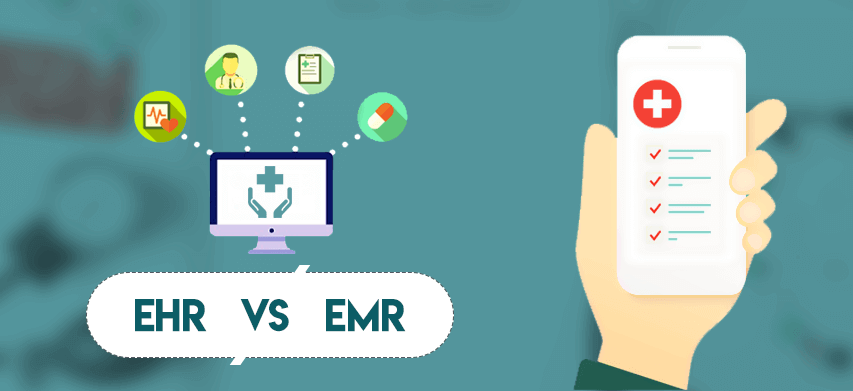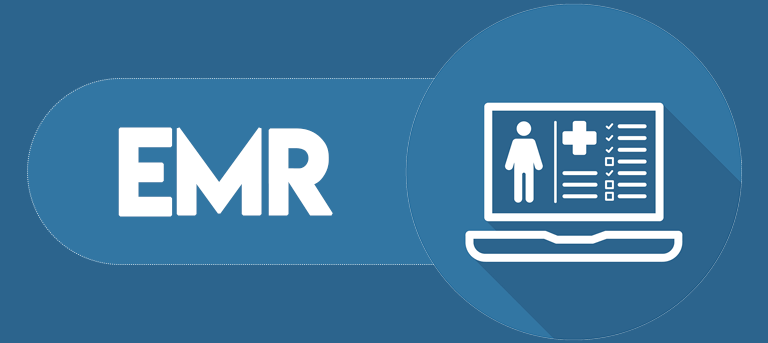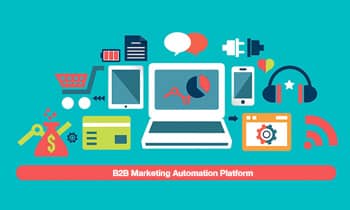64-year-old California resident Sarah Jones was pleasantly surprised to see her medical diagnostics reports being delivered in the digital format on her smartphone. Instead of reams of paper which she would have needed to carry along to the hospital visits, she now needs to carry her mobile and can easily share it with her physician and care team to enable efficient record keeping. This is the level of convenience and efficiency being offered by technology entering into the traditional healthcare sector.

Any idea what these digitized health and medical records are called? EHR? EMR? Confused?
Well, you aren’t alone!
Quite often we observe that two seemingly similar terms are used interchangeably. This form of human error has not even spared the medical field. Neither are those professionals who use medical technology, day in and out, spared from committing this error.
Considering that CIOs feel EHR solutions to be a significant value differentiator, it is vital to understand the difference between the two terms so that each can be utilized in the best possible way within the healthcare ecosystem.
Though EHR and EMR may sound alike, there happens to be a distinct difference between them. Knowing the difference between EHR and EMR becomes important to those of you who are looking forward to the incorporation of medical technology into practice or are seeking out software that replaces the current system in use.
However, while we go on to spot the differences by pitting EHR vs. EMR, we need to look at each term individually.
What is EHR?

Acronym for Electronic Health Records, EHR traces a patient’s health history, following them from one healthcare provider to another throughout the course of their lives. It is a patient’s medical records in the digital format. EHR makes it easy to show the patient’s entire medical history: the symptoms, prescribed medications, treatment in use, progress over time, course correction measures and more.
An EHR bridges the gap between a patient and a doctor. The faster the information is pulled up regarding the patient’s medical history, the better the prognosis can be. EHRs aid critical medical decision-making and ensure better patient outcomes.
Now, What is EMR?

Leading to one of the most common factors that lead to the confusion between EMR and EHRs is the fact that an EMR is also an overview of the patient’s medical history. However, an EMR is restricted to a single practice alone. They also give out information about the patient’s symptoms, prescribed medication, etc.
Though they are accessible by other medical facilities, as and when the need arises, EMRs are rather destined to reside in the hospital/clinic the patient visits.
The Origins of EHR
The history of EHRs can be traced all the way back to 2004 when the in-office US President Bush mentioned about it in one of his State of the Union addresses. This announcement laid the foundation for the process of making electronic health records a practicality. This revolutionized the way medical care was imparted, making it effective and quick.
Electronic Health Records have now become an integral part of modern day healthcare practices by decreasing the distance between a patient and a physician and resorting to the ethos of uplifting the quality of medical services available to the masses.
Origins of EMR
The idea behind EMR is similar to that of problem-oriented medical charts in the 1960s. Problem-oriented medical charts concerned itself with the symptoms the patient showed and the treatment that would be prescribed. This enabled doctors to compare charts and reach to the root cause of the disease faster than before.
With the rise of the modern computing era, what was once just physical medical records, now turned into Electronic Medical Records. What was once on paper alone, was now transferred to electronic files, which made storing and accessing medical data much more seamless and less time-consuming. Keeping all health records in one central digital repository place also enables efficient tracking of community health problems.
Considering how fine the line is between EHR and EMR, one is bound to ask whether something could be EMR and EHR both. Well, it’s possible.
It is a legitimate possibility that older companies maintain brandings as EMRs to meet the sole purpose of avoiding confusion. EHR being a relatively newer concept still remains to be slightly esoteric and hence, long-term customers could be privy to them.
What’s Next?
A concept that is even newer than EHRs and EMRs is something that is known as Personal Health Records or PHRs. A PHR, quite like its predecessors, is a tool that is used to gather, track, and access past and current medical information of a patient. This is beneficial in the sense that it ends up saving your money in going through medical tests all over again to probably diagnose the same disease you may have had before. Out here, however; it is the patient who takes up the task of updating his/her medical records regularly, and not the physician, as it was done earlier. A PHR thus contains vital medical information about procedures the patient has undergone in the past, family history and various other bits of information that are medically relevant.
The reliance on technology to make diagnostics simpler is indeed a boon to modern day medical practices. Overcoming challenges like these with the incorporation of technology has definitely helped simplify stuff and deliver better patient care.
To Conclude
In the medical field, the terms EHR and EMR are used interchangeable owing to the basic fact that they both concern themselves with the storing of medical information. The only difference between EHR and EMR is EMRs restriction to a single practice only. EHR vs. EMR, if at all an argument, is redundant because, in the end, it is all about storing medical information that is imperative to the health and well-being of every person.
But in case it does come down to spelling out the difference between EHR and EMR, then one must know that EHR is more about the transfer of patient’s information between stakeholders in the healthcare fraternity, whereas EMRs are nothing but digital representations of a patient’s medical charts.
Partner with Mobisoft for custom EHR integrations.
We can execute cost-effective and time-saving EHR integrations for Epic and Cerner using Redox Engine and FHIR. The extensive experience with complex EHR integration across multiple healthcare environments is what makes us the go-to partner for your custom EHR solution needs.
Author's Bio

Shailendra Sinhasane (Shail) is the co-founder and CEO of Mobisoft Infotech. He has been focused on cloud solutions, mobile strategy, cross-platform development, IoT innovations and advising healthcare startups in building scalable products.


